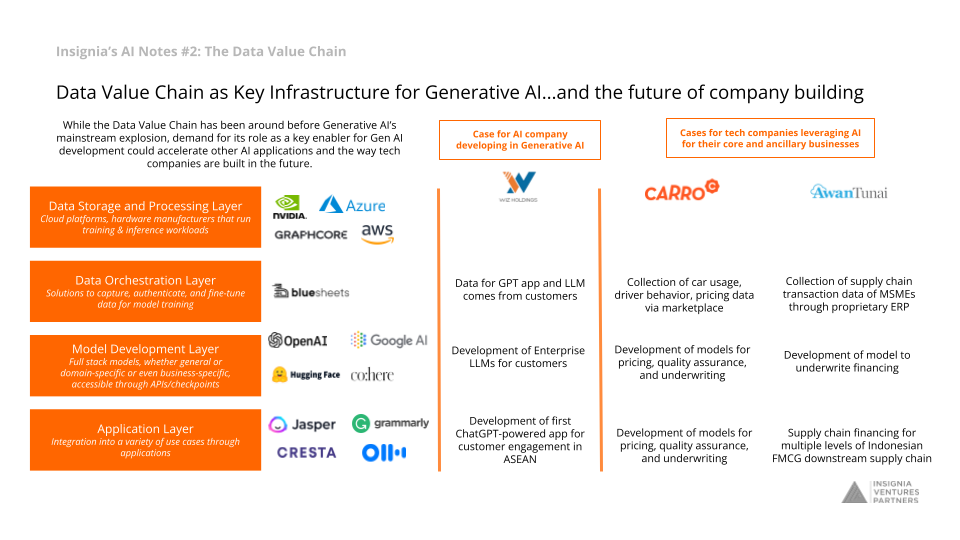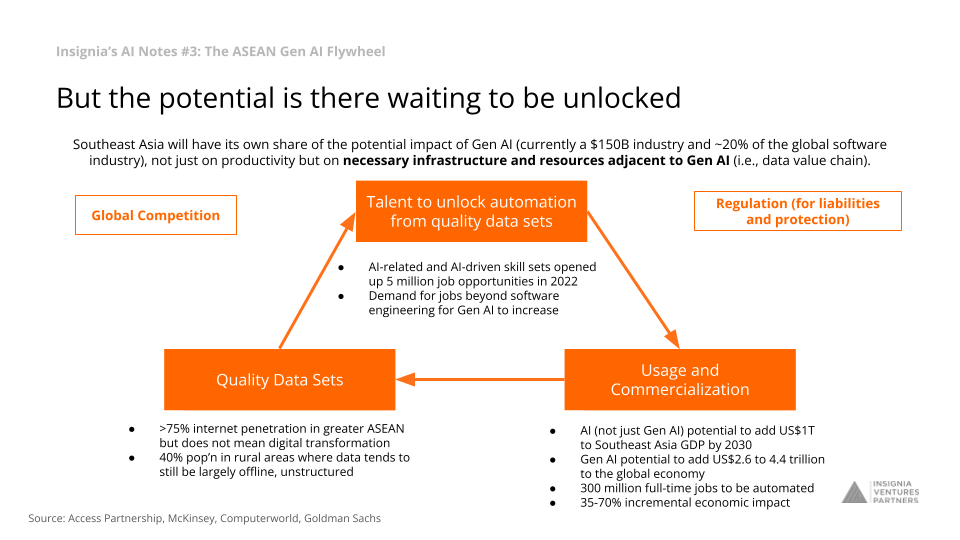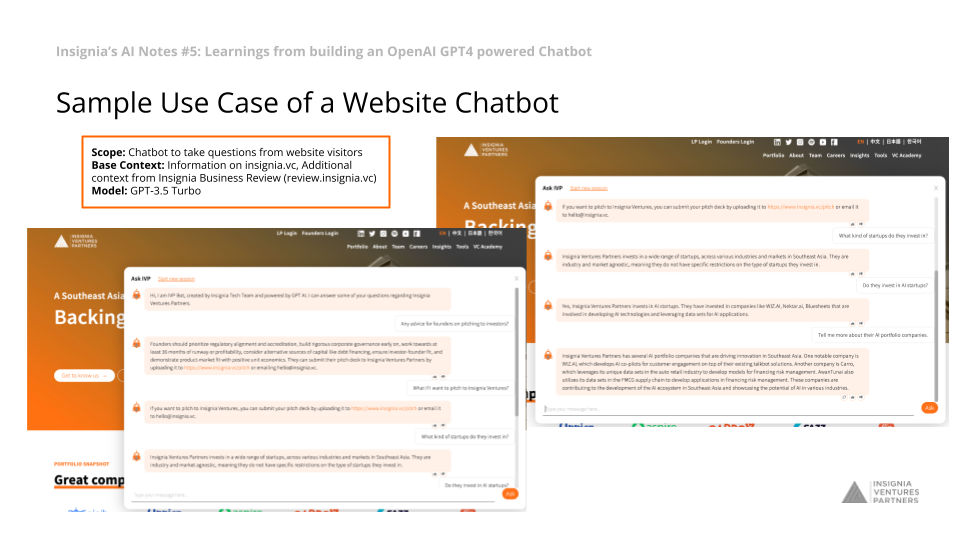Over the past six weeks in our AI Notes Series, we have been sharing insights, learnings, and opinions on the implications of generative AI’s rapid rise to the forefront of innovation and culture.
It’s just the beginning (stay tuned on LinkedIn), as we look to dive into more specific use cases (e.g., insurance, healthcare, law, etc.) but here’s a recap of some points we’ve uncovered so far:
(1) Not all Gen AI is equal.
We are still at that point in the innovation curve where the Generative AI stack is still quite fragmented, as we write in this article. Even for content creation, you have multiple apps with different purposes all charging separate rates. Those that do serve similar purposes will then vary in which aspects their models perform better. Just as we have seen in other areas of digital transformation, this fragmentation will eventually pave the way for solutions with more end-to-end functionality.
(2) Gen AI’s impact on data value chain impacts all companies.
Beyond the use cases for large language models and other generative models across industries, the momentum sparked by gen AI for enterprise sets up competitive advantages for companies that are able to better leverage and fine tune data sets. This is regardless if they use gen AI models or discriminative AI models, as we write in this article.
(3) There’s still a massive gap between talent and commercialisation.
In Southeast Asia, AI (not just gen AI) has the potential to add US$1T to the region’s GDP by 2030. But for this to materialize, there needs to be a greater pool of talent. AI talent can span an entire stack of skills, from prompt engineering to machine learning. And this talent pool also needs to be actively building for monetizable use cases, as we write in this article. We’re working to close that gap with a technical talent focused community. If you’re interested in being a part of this, let us know.
(4) You can’t just plug in Gen AI into anything, at least not at first.
Given the current constraints of models and products, Gen AI may not always the best, or at least the first, step in addressing certain issues or increasing certain productivities, as we write in this article. Process automation may first be necessary or already suffice to improve cost efficiencies on data workflows for example, and once that’s in place can the potential of LLMs be unlocked.
(5) Context is king.
This seems quite obvious for generative AI. What is understated are the implications of this on Gen AI workflows (i.e., how is the context being obtained, processed, and improved over time). There’s a lot more than expected that goes into ensuring OpenAI API integrations are efficient for specific use cases and narrow scopes, like a simple website chatbot, as we write here.
(6) Regulation is phenomenally fast but not quite clear where it’s headed.
Compared to say social media or the sharing economy, regulation has been quick to accelerate or form in response to generative AI, as we write in this article. But it’s still all quite ambiguous, especially with respect to data privacy and tracing liabilities. This is because generative models tend to create black boxes (memory) still difficult to unpack.
(7) Gen AI outputs can only be as good as the one using it.
An implication of “Context is king” is the disparity in literacy. Someone with a more powerful command of a specific language is likely to find more productivity from certain tools. Someone with a deeper understanding of photography (or better hardware) may be able to unlock more value from image generation, using additional tools on top. While generative AI today closes the gap in productivity, there’s still the gap in capability.
Follow us for more learnings as we dive further into AI and generative model use cases.
Paulo Joquiño is a writer and content producer for tech companies, and co-author of the book Navigating ASEANnovation. He is currently Editor of Insignia Business Review, the official publication of Insignia Ventures Partners, and senior content strategist for the venture capital firm, where he started right after graduation. As a university student, he took up multiple work opportunities in content and marketing for startups in Asia. These included interning as an associate at G3 Partners, a Seoul-based marketing agency for tech startups, running tech community engagements at coworking space and business community, ASPACE Philippines, and interning at workspace marketplace FlySpaces. He graduated with a BS Management Engineering at Ateneo de Manila University in 2019.





